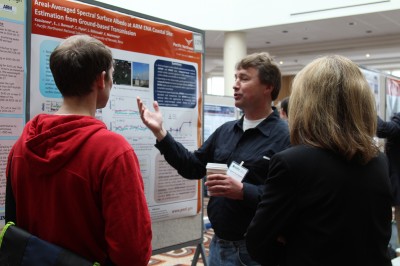
The new working groups are Aerosol Processes, Warm Boundary Layer Processes, High Latitude Processes, and Convective Processes. They replace the three working groups—Aerosol Life Cycle, Cloud Life Cycle, and Cloud-Aerosol-Precipitation Interactions.
More information about the re-organization will be presented at the ARM/ASR Joint User and Principal Investigator (PI) Meeting, March 13 to 17, but the ASR program managers Ashley Williamson and Shaima Nasiri wanted to introduce the new working groups and their chairs before the meeting.
The new working group chairs are heavily involved in planning the Joint Meeting and may reach out to PIs and ARM users regarding breakout sessions and other working group items. The new chairs are:
- Aerosol Processes Working Group
- Nicole Riemer, University of Illinois, nriemer@illinois.edu
- Jim Smith, University of California, Irvine, jimsmith@uci.edu
- Warm Boundary Layer Processes Working Group
- Rob Wood, University of Washington, robwood@atmos.washington.edu
- Yunyan Zhang, Lawrence Livermore National Laboratory, zhang25@llnl.gov
- Convective Processes Working Group
- Anthony del Genio, NASA Goddard Institute for Space Studies, anthony.d.delgenio@nasa.gov
- Adam Varble, University of Utah, a.varble@utah.edu
- High Latitude Processes Working Group
- Gijs de Boer, University of Colorado, gijs.deboer@colorado.edu
This work was supported by the U.S. Department of Energy’s Office of Science, through the Biological and Environmental Research program as part of the Atmospheric System Research program.

